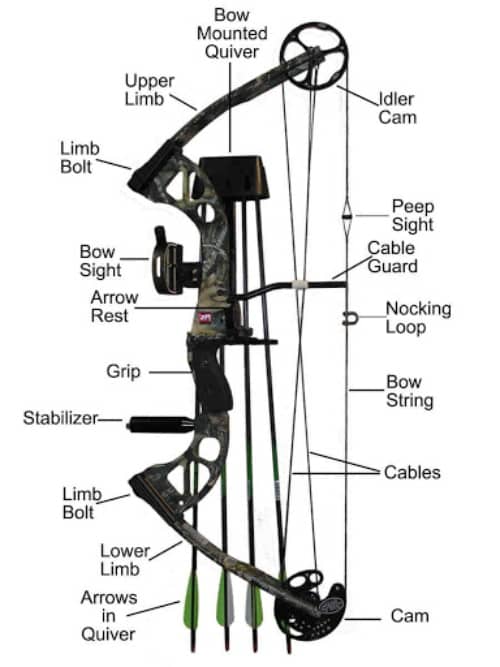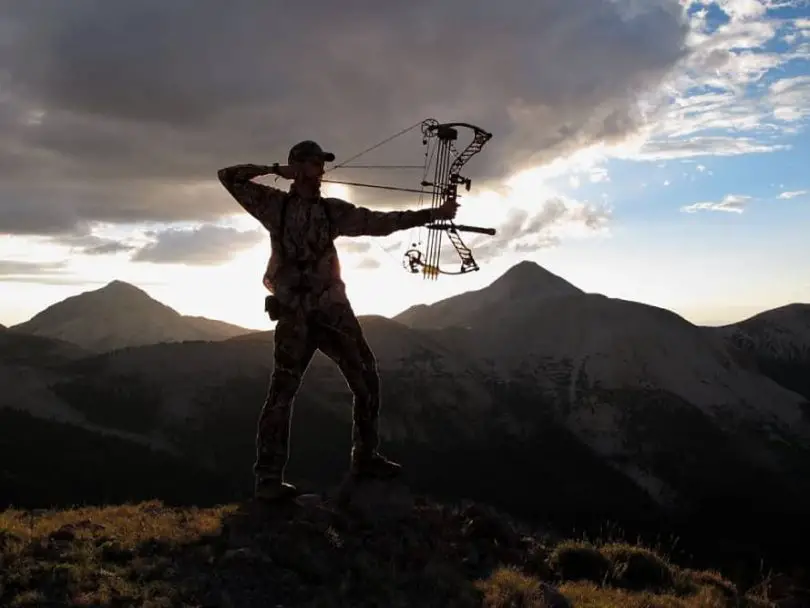Modern compound bows are now considered one of the fastest, most accurate, and most powerful bows.
The question is, how can you handle one, what are the cutting-edge advantages they have when compared to the conventional bow, and how does a compound bow work exactly?
Hundreds of decades ago, bows were used by men in terms of war and hunting.
At that time, one of the easiest bow designs was called the straight-limbed bow.
Today, the significant improvements that serve as a substantial difference in the conventional bow were the recurve designs that are created with forwarding curve limbs.
The presence of the recurve is considered a significant improvement due to the number of its stores and transmits, and when it’s compared to the straight bow, this stands out to be different.
Before you understand how does a compound bow work so you can easily find the best compound bow out there, let’s first take a look at the essential parts of this type of bow for your better understanding.
How Does a Compound Bow Work
Anatomy of a Compound Bow

Riser: the “Chassis” found on the bow is there to grip the limbs and offer you – the shooter – a spot to place your handle and mount stabilizers, the arrow rest, and the sight.
The riser is strong and light.
Limbs: this is the flex part that’s known to store flex and release energy.
Cams: you can either have a single cam, double cam, or hybrid cam.
The single cams are usually very easy to pull and make necessary adjustments.
On the other hand, the dual cams appear a bit difficult to pull and synchronize, but they move very fast.
If you have hybrid cams, it offers the blend of both cams with ease when it comes to adjustment.
Bowstring: once you pull it, the cam is rotated, the limbs are flexed and once you release, the arrow gets launched automatically.
Space-age tools that don’t stretch easily are materials that are used in creating bowstrings.
Cables: the cable is there to lash each limb on a cam, by allowing it to pull over one another.
Cable Slide: this clutches the cable on one side, a bit further from the arrow path.
Brace Height: this explains the distance that exists between the “throat” of a grip and that of the string rest.
When the distance is shorter, the longer string is, when it comes in touch with the arrow. The shorter the height of the brace, the longer the string power.
Remember sting power is important when it comes to speed.
Necessary Compound Bow Accessories
These are not included when you purchase a bow since they’re the subject of preference between archers; we all have our matter of choice when it balls down to what we want, and this is also influenced by our shooting style, disciplines, and conditions.
Arrow Rest: this is the point where the arrow rests once it’s held. This is designed differently.
D-Loop: this is the small loop cord that is fixed to a string. You knock within the attachment and then clip it to the loop with a single release.
Peep: this is a small plastic or metal circle fixed on the string of the bow. It’s there to allow you to align the bow sight properly.
Release: fingers are not used to draw out the compound. As an alternative, you can use a mechanical release that firmly wraps around your wrist.
Moving weight off your hand and expanding the poundage you got initially.
This is designed as a one-sided hook or two-sided hook, and both are meant to function.
Sight: the sight gathers ambient light and then transmits the light directly to the pin’s top via a cable made of fiber optic.
Using the sight from a fixed pin tends to be a bit faster while in action, although adjustable sights are there to give room for greater accuracy and precision.
Stabilizer(s): the function of the bow stabilizer is to help create balance, stability, and accuracy while it reduces vibration on each shot.
Target archers make use of long stabilizers due to their degree of stability, although some make use of stronger stabilizers that are there to point side and backward.
Quiver: The quiver is mounted at the side of the bow. It’s used to hold the arrow.
The hip and old-school back quivers are slow to reach when needed, and they’re more to get attracted to stuff while in motion.
Advantages of a Compound Bow
-
Mechanical Advantage
The compound bow genius is known for its own mechanical advantage. This is easier to comprehend when you’re using a single-string recurve bow.
This time, once you pull back the bowstring, a force is generated to flex the limbs, this automatically stores enough energy that is expressed once the arrow is released.
-
Traditional Bow Physics
Remember high school physics, where energy is explained as When this is applied to a traditional bow, it explains a force curve that is in a linear state.
This means once the string on the bow is drawn, the more force it requires to move backward and store more potential energy.
Logically the energy needed to hold the bow at the right pace is directly proportional to the distance it covers when drawn.
-
Compound Bow Physics
The principles that govern the operation of a compound bow are pretty similar to that of a pulley system.
The pulley system and the cams attached to the compound bow operate similarly to the mode of the block and tackle system.
The device is known to use multiple energy at a given distance.
The compound bow has no linear curve force that is found in most conventional bows.
While you apply the needed force, the string gets peaks when it comes to certain levels.
Conclusion
It is normal to get curious about the device’s work principle.
With a simple gaze at a traditional bow, you can quickly understand its mode of operation.
The surprising fact here is that you don’t need to understand all the working principles of a compound bow before launching out to shoot one.
Reading through the above piece will usher you as a beginner into some of the required rudiments in no-distance time.
Happy shooting!








Leave a Comment